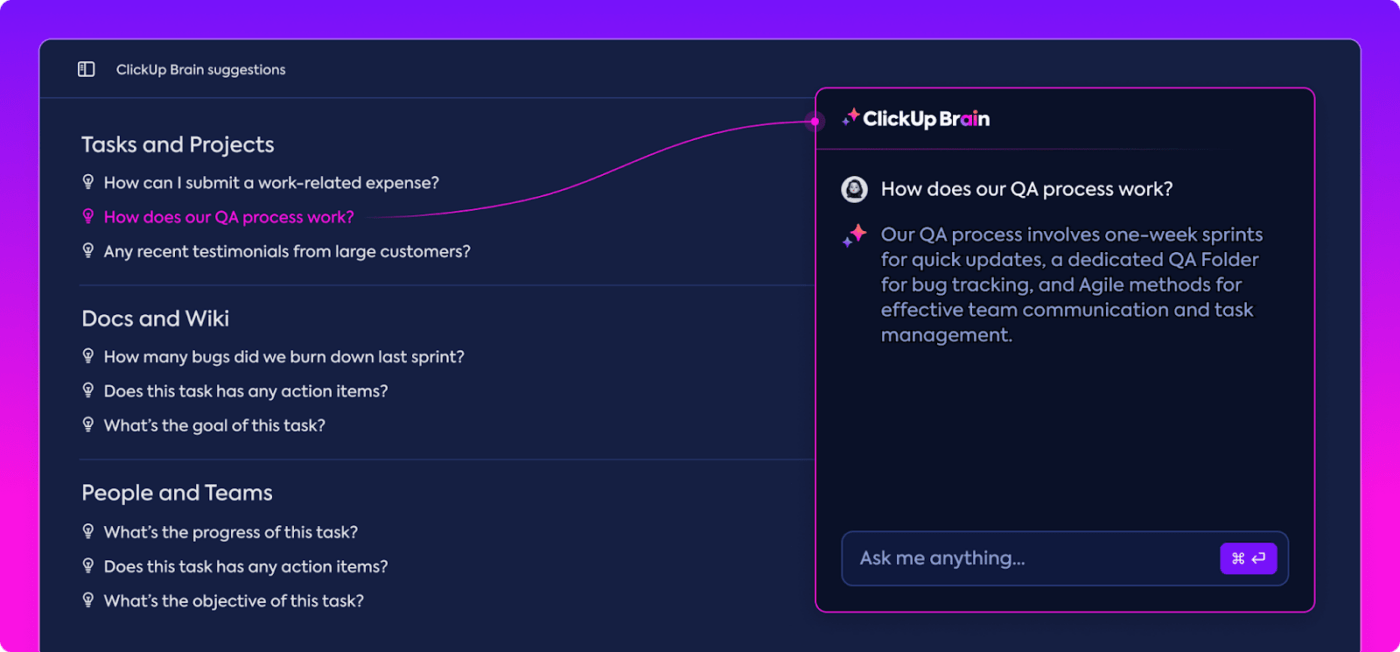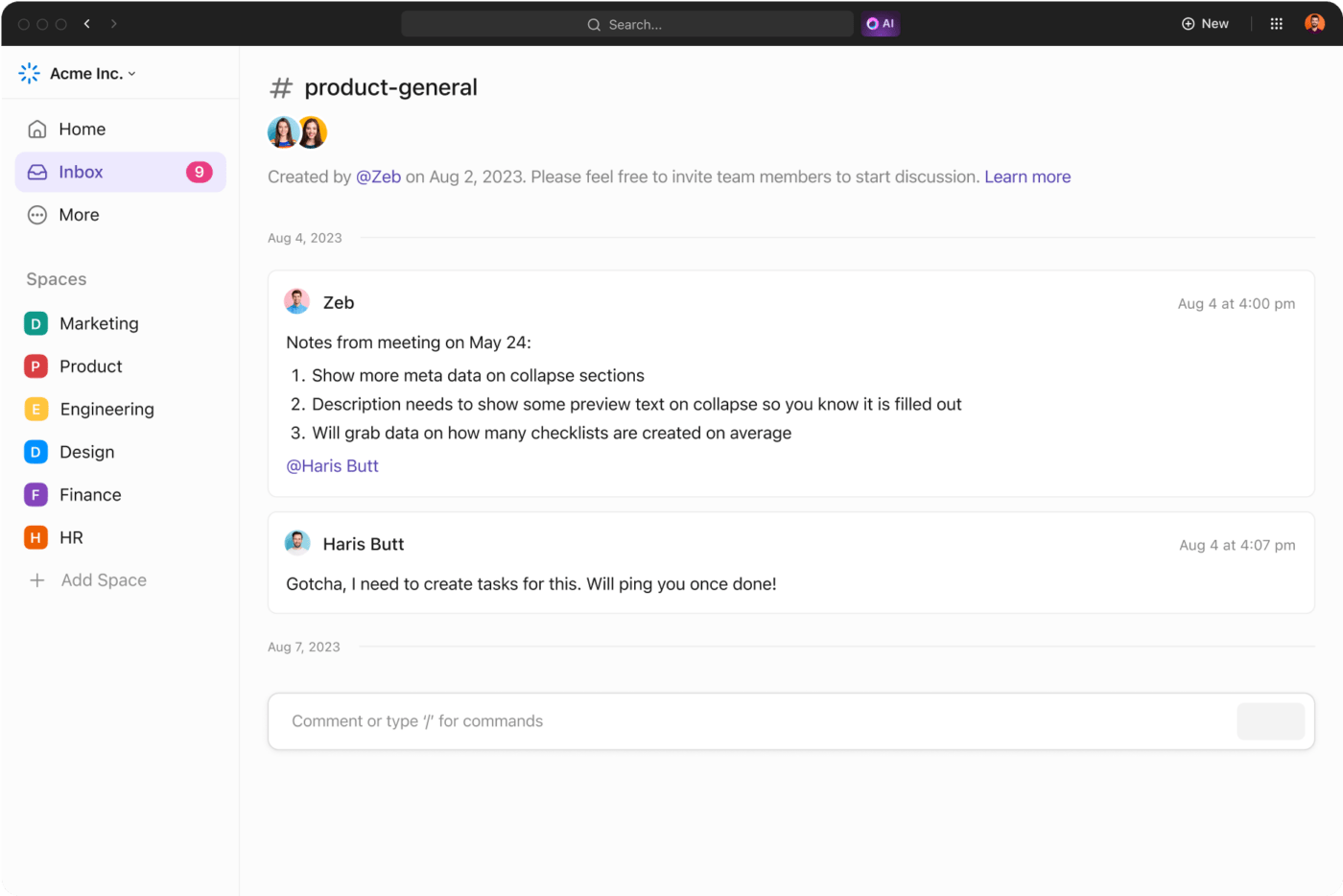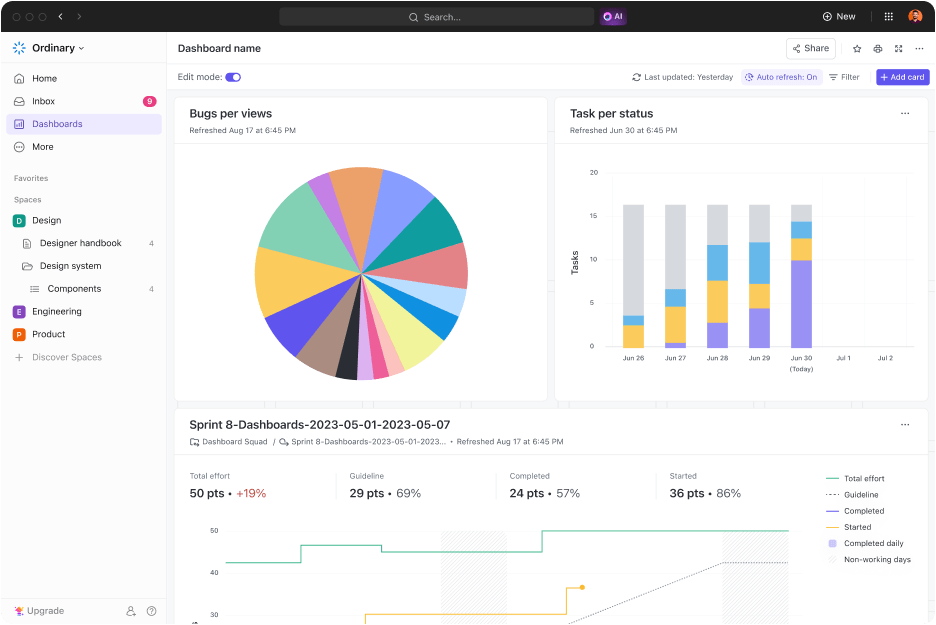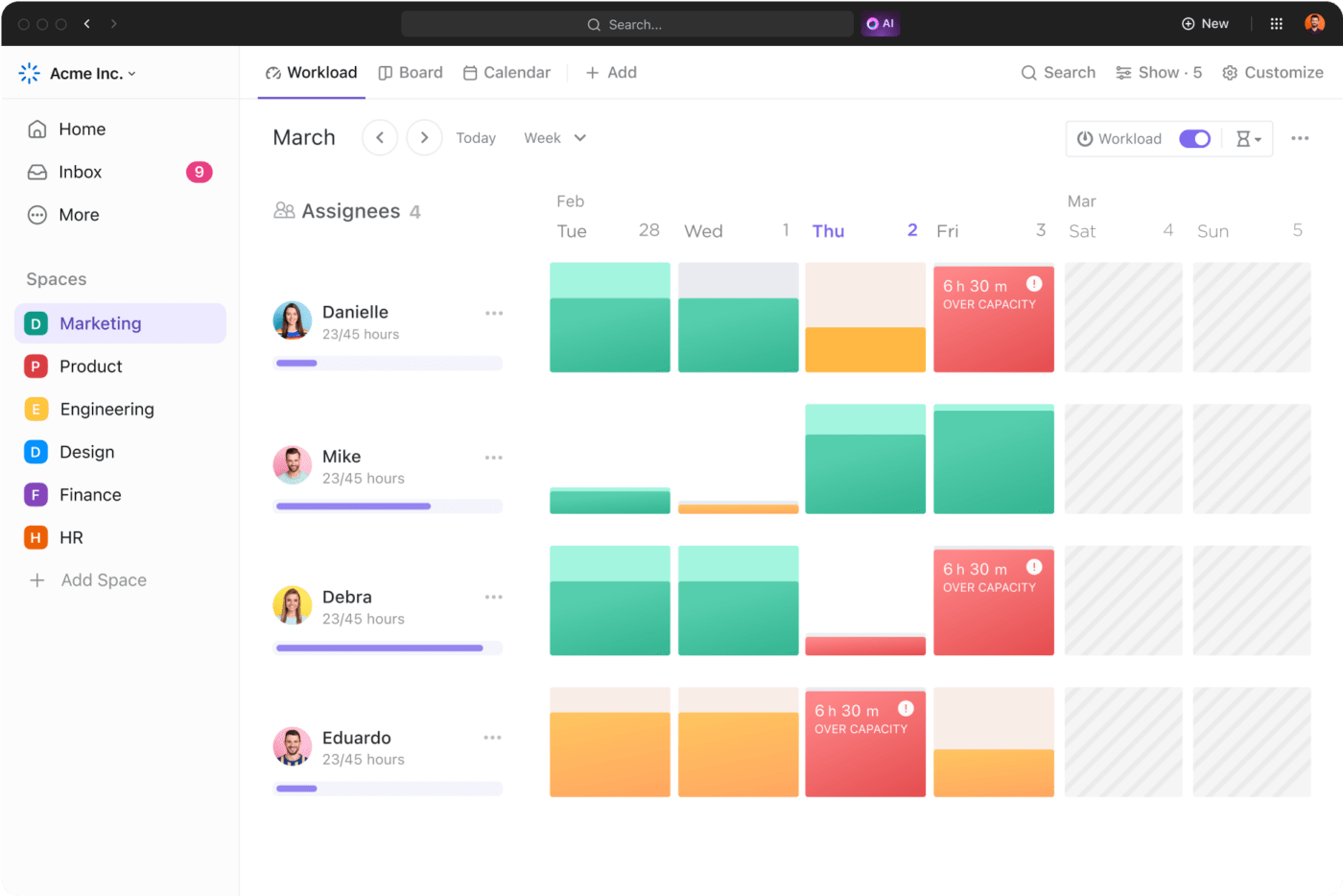How to Practice Centralized Communication Strategies

Sorry, there were no results found for “”
Sorry, there were no results found for “”
Sorry, there were no results found for “”
In our multi-tasking reality, communication and collaboration play a central role in successfully managing a blend of team, individual, and cross-functional projects.
However, when you are working on many projects at once, multiple communication channels and tools lead to information overload, scattered messages, inefficient workflows, and silos.
And what brings this chaos to order? Two words: Centralized communication.
Funneling all communications through a single hub ensures that every message, update, and piece of feedback is easily accessible. The benefits are endless—reduced stress, productivity improvements, better decision-making, consolidated information, etc.
In this article, we’ll discuss how centralized communication can create a more streamlined and efficient business work environment.
Centralized communication consolidates all communication channels and tools within a single platform or system. It streamlines how information flows within an organization. This unified approach ensures that messages, updates, and decisions are disseminated efficiently across all channels and teams.
For example, using ClickUp Project Management software as a centralized communication hub allows team members to access relevant information, collaborate seamlessly, and communicate effectively in real time. This enhances decision-making and increases productivity by keeping everyone on the same page.
It also allows asynchronous communication, which minimizes the need to schedule meetings and phone calls.
Centralized communication significantly saves time, simplifies processes, and boosts overall efficiency, proving crucial for businesses aiming for success in a fast-paced environment.
In the digital era, centralized communication is a cornerstone for thriving organizations. Let’s explore its benefits and how it can revolutionize how we work, collaborate, and succeed.
Centralized communication turns the tide on productivity. By channeling all communications through a single hub, you ensure every team member can access the necessary information and updates instantly. This reduces the time spent searching through multiple tools and platforms, leading to quicker task completion and achieving communication goals efficiently.
Centralized communication doesn’t just make life easier inside the organization; it revolutionizes the customer experience, too. With all customer interactions and feedback funneling into one centralized platform, your team can respond more quickly and effectively to customer needs. This direct approach to communication ensures that customers feel heard and valued, fostering loyalty and satisfaction.
Say goodbye to isolated departments and hello to a united work environment. Centralized communication eradicates information silos by ensuring that all departments share a common platform for their communications. This encourages a collaborative work culture where information flows freely between teams, enhancing efficiency and fostering innovation.
The dynamism of centralized communication shines in real-time collaboration. Whether it’s instant messaging or project updates, having a central hub for communication ensures that team members can collaborate and make decisions instantaneously, no matter where they are.
Centralized communication transforms decision-making and governance within organizations. By consolidating communication channels, decision-makers can quickly gather relevant information, making informed decisions faster. This streamlined approach also improves governance by providing a clear record of communications and decisions, which is crucial for compliance and transparency.
The necessity for a centralized communication hub in your organization is undeniable. A study by IDC and McKinsey highlights this need, stating effective communication can amplify productivity by 20 to 25%.

Research shows that 60% of employees feel improved communication would heighten their engagement with work.
A centralized communication system is the cornerstone of this enhancement, consolidating all communication channels, tools, and processes into a single platform. This ensures everyone remains on the same page, significantly streamlining processes and boosting productivity.
Implement a centralized communication hub to eliminate the confusion stemming from multiple tools and channels. With instant messaging, project updates, and relevant information centralized, teams can more effectively focus on their tasks rather than sifting through a sea of data.
Choosing the right communication hub equipped with a user-friendly interface and advanced integration capabilities empowers your teams and simplifies processes for successful projects.
In an era where data breaches are a constant threat, the security features of your centralized communication platform are crucial. Look at the security benefits that centralized communication brings:
Centralized communication channels all information through a single hub, streamlining processes and improving efficiency. It ensures everyone is on the same page, facilitating easy collaboration.
Conversely, decentralized communication networks spread information across various platforms, allowing more autonomy but potentially leading to information silos, inconsistencies, and the risk of data breaches.
| Pros | Cons |
| Streamlines communication, reducing unnecessary meetings | Leads to bottlenecks in the information flow |
| Upgrades security with centralized data management | Reduces flexibility in communication processes |
| Facilitates collaboration among team members | Slows down decision-making in large organizations |
| Ensures consistent and effective communication | Risks over-dependence on a single platform |
| Aids in compliance and easier management of communication standards | Less autonomy for departments or remote teams |
Deciding between centralized and decentralized communication demands a strategic approach. Here are some steps you can take to arrive at the best decision for your company:
Centralized communication is best for:
Technology plays a pivotal role in centralized communication, be it internal communication software, workplace communication tools, or other business tools. It’s critical to have a crystal-clear understanding of your organization’s specific needs before diving into any technology investment.
So, what should you include in your communication technology to guarantee true centralization and avoid future hurdles? Look for:



ClickUp revolutionizes how businesses unify all work-related communications. With ClickUp’s comprehensive features, organizations can seamlessly integrate various aspects of their operations into one cohesive platform.
ClickUp’s communication plan templates streamline the creation of comprehensive communication strategies. They enable teams to effectively outline, execute, and monitor their internal and external communication processes, ensuring everyone stays informed and aligned on objectives.
Here are some primary ClickUp features that enable centralization:





The ClickUp Company Overview Template can be used to create a central knowledge hub about the company. It creates a consistent, unified messaging about the company and ensures all employees know about initiatives and projects across the organization.
Identifying potential data security and privacy challenges is paramount in centralized communication, where all data converges into a single platform. Consolidating information heightens the risk of data breaches and privacy infringements, making the system a lucrative target for cyber-attacks.
Ensuring robust security measures and privacy protocols is crucial to protecting sensitive information and maintaining user trust. Let’s look at some common challenges and how to resolve them:
Data breaches in a centralized system can expose sensitive information, causing significant damage. For example, a single vulnerability in the system could allow hackers to access all company communications.
Solution:
With centralized communication, there’s a thin line between monitoring for productivity and invading privacy. This scrutiny, aimed at optimizing performance, risks encroaching upon individual privacy.
Solution:
Centralized communication systems can make adhering to various data protection laws and regulations more complex.
Solution:
The shift toward centralized communication within your business isn’t just a step forward; it’s a leap toward operational excellence. The key takeaway for business owners and decision-makers is the undeniable value such a system brings to the table—better productivity, simplified workflows, and a unified team, all contributing to a more engaged and efficient work environment.
Now, the path forward involves:
By adopting a centralized communication system, you’re not just changing how your team communicates; you’re setting them up for success in a dynamic environment.
Act now to build a more connected and cohesive future for your business— Sign up today!
An example of a centralized communication network is a company using project management software like ClickUp as its central communication hub. This channels all communication—emails, instant messaging, project updates—through a single platform, ensuring that information is easily accessible and shared among team members. This approach streamlines processes, bolsters security, and promotes seamless collaboration, allowing for efficient organizational communication and decision-making.
Centralization in an organization might be exemplified by the adoption of a centralized communication system where all departments use a unified platform for all their communication needs. Instead of each department using different communication tools, a single platform serves as the communication hub for exchanging information, coordinating tasks, and making informed decisions. This strategy simplifies communication channels, reduces unnecessary meetings and phone calls, and ensures that all team members are on the same page, significantly boosting overall efficiency.
Communication in a centralized structure involves funneling all organizational communication through a centralized communication hub, ensuring that every message, update, and piece of feedback is directed and stored in a single location. This method enables team members to communicate effectively, access relevant information promptly, and easily collaborate on projects.
Centralized communication fosters a culture of collaboration and efficiency, underpinned by enhanced security and simpler processes, pivotal for successful project management and increased productivity in the modern workplace.
© 2025 ClickUp